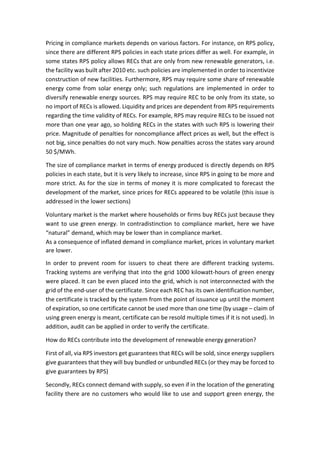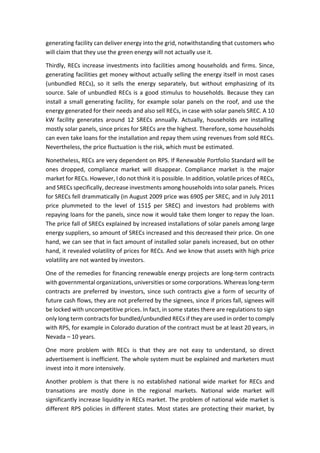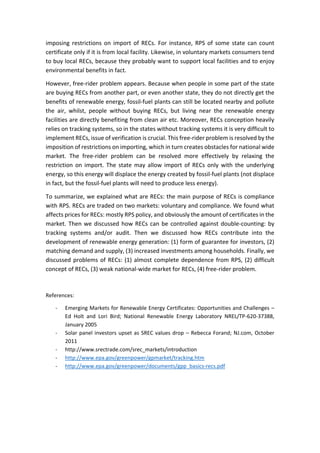Renewable energy certificates (RECs) represent 1,000 kilowatt-hours of renewable energy generated. RECs can be sold separately from the underlying energy. RECs are purchased by energy suppliers and firms to comply with Renewable Portfolio Standards, which require a portion of energy come from renewable sources. RECs are traded in compliance and voluntary markets, with prices in compliance markets influenced by RPS policies. RECs help develop renewable energy by providing revenue guarantees for generators, connecting demand and supply, and increasing investments in renewable facilities. However, RECs depend heavily on RPS and price volatility poses challenges.



